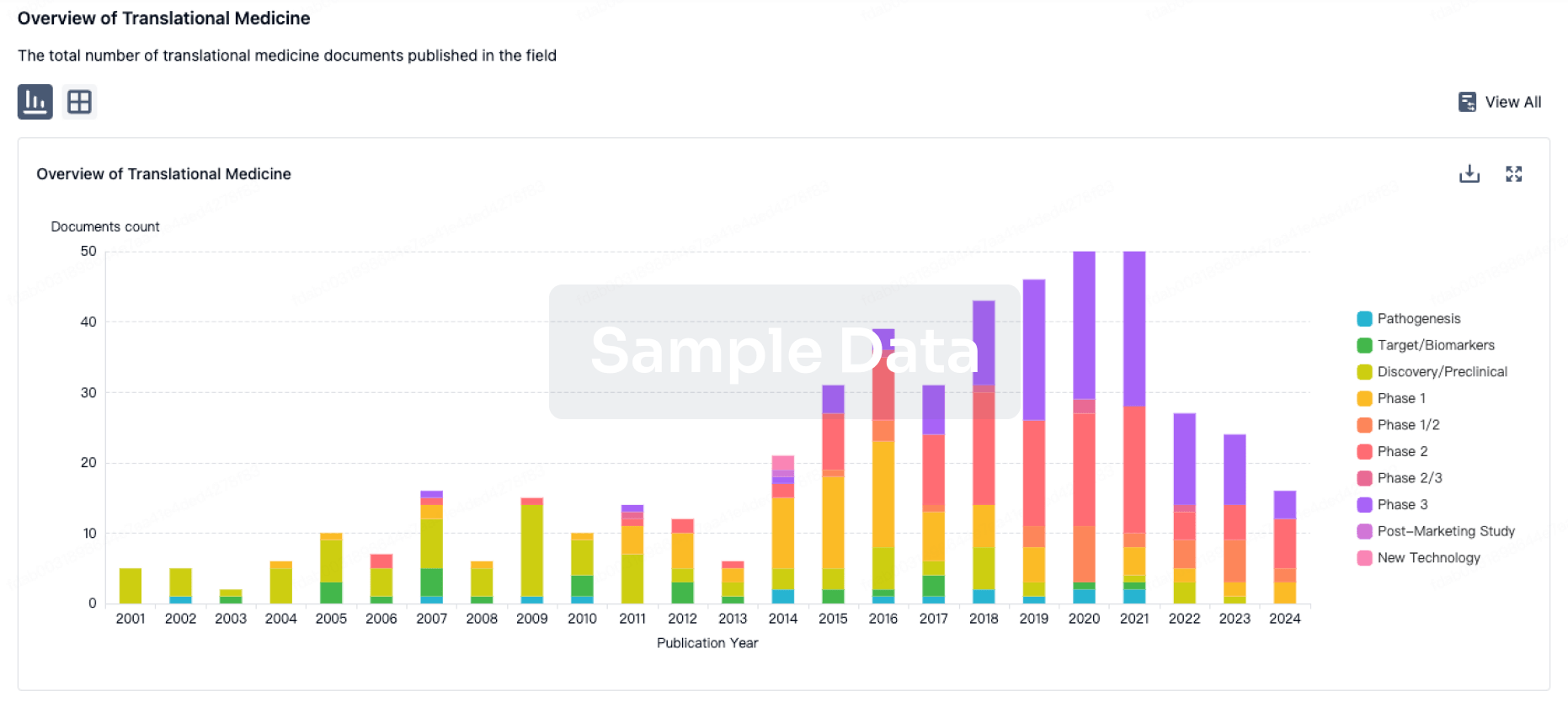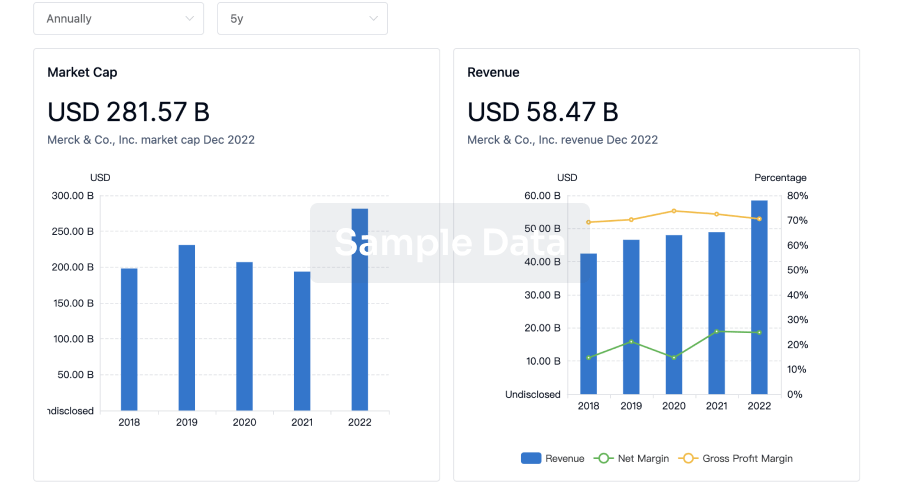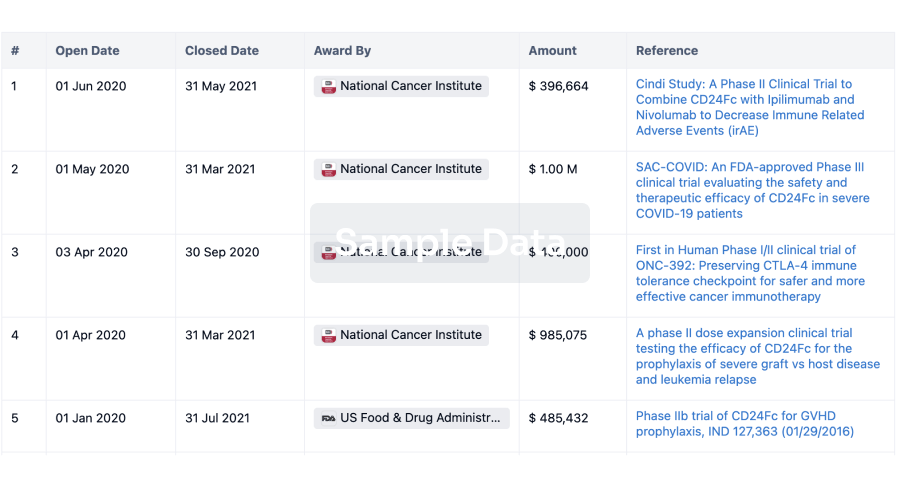Request Demo
Last update 06 Jul 2025
Ancestry.com DNA LLC
Last update 06 Jul 2025
Overview
Related
100 Clinical Results associated with Ancestry.com DNA LLC
Login to view more data
0 Patents (Medical) associated with Ancestry.com DNA LLC
Login to view more data
1
Literatures (Medical) associated with Ancestry.com DNA LLC29 Aug 2014·SCIENCE
The genetic prehistory of the New World Arctic
Article
Author: Moltke, Ida ; Lynnerup, Niels ; Rasmussen, Morten ; Jakobsson, Mattias ; Raghavan, Vibha ; Khusnutdinova, Elza ; Korneliussen, Thorfinn S. ; Malaspinas, Anna-Sapfo ; Fahrni, Simon M. ; Nielsen, Rasmus ; O’Rourke, Dennis H. ; Metspalu, Mait ; Malmström, Helena ; Fitzhugh, William ; Gulløv, Hans Christian ; Grimes, Vaughan ; Knecht, Rick ; Rasmussen, Simon ; Hansen, Thomas V. O. ; Bustamante, Carlos ; Dissing, Jørgen ; Cybulski, Jerome ; Renouf, M. A. Priscilla ; Hayes, M. Geoffrey ; Dneprovsky, Kirill ; Gilbert, M. Thomas P. ; Pierre, Tracey ; Britton, Kate ; Spitsyn, Victor A. ; Crawford, Michael H. ; Lahr, Marta Mirazon ; DeGiorgio, Michael ; Olsen, Jesper ; Albrechtsen, Anders ; Andreasen, Claus ; Melchior, Linea ; Kivisild, Toomas ; Fuller, Benjamin T. ; Raghavan, Maanasa ; Orlando, Ludovic ; Stafford, Thomas ; Willerslev, Eske ; Lange, Hans ; Appelt, Martin ; Arneborg, Jette ; Götherström, Anders ; Nielsen, Finn C. ; Wang, Yong ; Heinemeier, Jan ; Skoglund, Pontus ; Meldgaard, Morten ; Cornejo, Omar E. ; Friesen, T. Max ; Grønnow, Bjarne ; Coltrain, Joan ; Villems, Richard
The New World Arctic, the last region of the Americas to be populated by humans, has a relatively well-researched archaeology, but an understanding of its genetic history is lacking. We present genome-wide sequence data from ancient and present-day humans from Greenland, Arctic Canada, Alaska, Aleutian Islands, and Siberia. We show that Paleo-Eskimos (~3000 BCE to 1300 CE) represent a migration pulse into the Americas independent of both Native American and Inuit expansions. Furthermore, the genetic continuity characterizing the Paleo-Eskimo period was interrupted by the arrival of a new population, representing the ancestors of present-day Inuit, with evidence of past gene flow between these lineages. Despite periodic abandonment of major Arctic regions, a single Paleo-Eskimo metapopulation likely survived in near-isolation for more than 4000 years, only to vanish around 700 years ago.
16
News (Medical) associated with Ancestry.com DNA LLC20 Nov 2024
Pfizer is enlisting another Flagship startup to help it create new obesity medicines.
After June’s
ProFound Therapeutics tie-up
, Pfizer will work with the incubator’s Ampersand Biomedicines in the hunt for new biologics for obesity.
The New York pharmaceutical company is also tapping into Flagship-founded Montai Therapeutics to find new small molecules for potentially treating lung cancer, the companies said Wednesday morning.
The two pacts are part of
Pfizer’s broader alliance
with the Cambridge, MA-based Flagship, which recently reeled in about
$3.6 billion in new funds
as pharma partnerships become a “
bigger and bigger deal
.”
Pfizer has had an uneven few years in obesity, particularly with
its danuglipron program
. Last month, it revealed
more details
about its other early-stage bets: a GIP antagonist and a once-daily oral GLP-1.
Ampersand hopes to help Pfizer create obesity treatments that go to a specific site in the body, rather than hitting healthy tissues or cells, so as to avoid side effects — like muscle loss and gastrointestinal concerns — and to make the drugs more potent.
The startup, which
emerged with $50 million
in March 2023, uses computational methods to find “addresses” for drugs to go to and then creates an “actuator” to carry out the therapeutic function, Flagship general partner Avak Kahvejian told
Endpoints News
last year. In January, it
bought
antibody discovery tech startup AbCheck, an Affimed subsidiary, for $6 million.
“We have addresses in virtually every tissue in the body, so you could think about virtually any disease,” CEO
Jason Gardner
said in an interview. Ampersand will likely make multiple other industry collaborations, he said, and it could form more tie-ups around obesity.
It’s early days with the Pfizer partnership, and Gardner declined to disclose the specific pathway tissue that they’re looking at. Flagship’s work in obesity has also attracted the attention of Novo Nordisk. Its companies
Metaphore Biotechnologies
and
Omega Therapeutics
have both formed partnerships with the Danish drugmaker.
In cancer, Pfizer’s new partnership with Montai will look at mechanisms that lead to lung cancer cell growth and find new small molecules that can potentially be turned into therapies. Pfizer has made oncology a core focus following its $43 billion Seagen acquisition last year.
Montai emerged with
$50 million in December 2022
and a high-profile CEO, Margo Georgiadis, who previously led Google’s Americas division and steered Ancestry.com to a nearly $5 billion
exit
to Blackstone.
The startup scours through molecules already consumed by humans via foods, supplements and herbal medicines. Its computational tools have brought together nearly 200 million so-called “Anthromolecules” and their derivatives, Georgiadis said. The company’s name means “climbing mountains with AI,” she said.
Georgiadis said in an interview that the company is trying to “create the first machine learning that enables us to decode that language of chemistry and how it connects to our biology.”
“By doing that, it enables us to take advantage of this unbelievably rich and diverse chemistry set that pharma had kind of put to the side,” she said. “It’s how drug development started. It’s a super-proven source of drugs, but it was perceived as complex, hard to make, the challenges with polypharmacology.”
Montai was working on a small molecule agonist for an undisclosed pathway in inflammation and immunology when Pfizer realized an antagonist of that pathway could be applied in lung cancer, Georgiadis said. The 65-employee company has created an internal pipeline of nine I&I therapies that are transcription factors and biologic replacements in dermatology, gastrointestinal and respiratory diseases, she said.
The company is “developing partnerships” with more companies, Georgiadis said, as Montai’s work applies across immunology, oncology, neuro-inflammation and other areas.
Acquisition
01 Mar 2024
DUBLIN--(
BUSINESS WIRE
)--The
"Human Gene Sequencing Markets, Strategies & Trends - Forecasts by Application, by Technology, by Workflow, by Product, and by Country, with Executive and Consultant Guides - 2023 to 2027"
report has been added to
ResearchAndMarkets.com's
offering.
Will all newborns receive genetic testing at birth? What segments are growing fastest? Where are the opportunities now that sequencing has gone mainstream?
The plummeting costs for Genome Sequencing is creating a gold rush. New consumers, new technologies, new market niches. It is reminiscent of the birth of the internet industry; a wide range of well funded players are racing for market share on a global stage. This report forecasts the market size out for five years. The report includes detailed breakouts for 14 countries and 5 regions.
Tumor Cell Sequencing? Direct to Consumer? Gene Expression? Find out about the technology in readily understood terms that explain the jargon. What are the issues? Find the opportunities, and the pitfalls. Understand growth expectations and the ultimate market forecasts for the next five years.
Scope of the Report
The Global Market for Human Genome Sequencing
Global Market Overview by Country
Global Market by Application - Overview
Global Market by Technology - Overview
Global Market by Workflow - Overview
Global Market by Product - Overview
Market Sizes by Application
Hereditary Gene Sequencing Market
NIPT Gene Sequencing Market
Oncology Market
Psychology Market
WGES Gene Sequencing Market
Pharmacogenomics Market
DTC Gene Sequencing Market
Research Gene Sequencing Market
Other Application Market
Market Sizes by Technology
Sanger Sequencing Market
NGS/2G Market
3G/Long Market
Other Technology Market
Market Sizes by Workflow
Sequencing Market
Sample Prep Market
Analysis Market
Market Sizes by Product
Instruments Market
Consumables Market
Software & Services Market
Vision of the Future of Human Gene Sequencing
Key Topics Covered:
1 Market Guides
1.1 Human Gene Sequencing Markets - Strategic Situation Analysis & COVID Impact
1.2 Guide for Executives, Marketing, Sales and Business Development Staff
1.3 Guide for Management Consultants and Investment Advisors
2 Introduction and Market Definition
2.1 Gene Sequencing Definition In This Report
2.1.1 Gene Sequencing
2.1.2 Hereditary
2.1.3 Non Invasive Prenatal Testing
2.1.4 Oncology
2.1.5 Psychology
2.1.6 WGES
2.1.7 Pharmacogenomic
2.1.8 Direct to Consumer
2.1.9 Research
2.1.10 Other
2.2 The Genomics Revolution
2.3 Market Definition
2.3.1 Revenue Market Size
2.4 Methodology
2.5 Perspective: Healthcare and the IVD Industry
2.5.1 Global Healthcare Spending
2.5.2 Spending on Diagnostics
2.5.3 Important Role of Insurance for Diagnostics
2.6 Chromosomes, Genes and Epigenetics
2.6.1 Chromosomes
2.6.2 Genes
2.6.3 Epigenetics
2.6.4 Genetic Testing vs. Gene Sequencing
2.6.5 Cost and Pricing Practice
3 Global Listing of Sequencer Installed Base - Location & Contacts
3.1 Notes to Installed Base Listing
3.2 Illumina Installed Base
4 Market Overview
4.1 Players in a Dynamic Market
4.1.1 Academic Research Lab
4.1.2 Diagnostic Test Developer
4.1.3 Instrumentation Supplier
4.1.4 Chemical/Reagent Supplier
4.1.5 Pathology Supplier
4.1.6 Independent Clinical Laboratory
4.1.7 Public National/regional Laboratory
4.1.8 Hospital Laboratory
4.1.9 Physicians Office Lab (POLS)
4.1.10 Audit Body
4.1.11 Certification Body
4.2 Human Gene Sequencing -Markets, Examples and Discussion
4.2.1 Inherited Disease - Not what it used to be
4.2.1.1 Clinical and Research Lines Blur
4.2.1.2 Genetic Counselling - Not so simple anymore
4.2.1.3 The Genetic Blizzard - Issues of Access and Payment
4.2.2 Newborn Screening - The Standard of Care
4.2.2.1 Newborn Screening - Do Parents Want to Know?
4.2.3 NIPT - We've Only Just Begun
4.2.3.1 NIPT, IVF and the Fertility Practice - PGS, PGD, CCS
4.2.3.2 NIPT in the Future - Beyond Inherited Disease
4.2.4 Oncology - Understanding Two Worlds
4.2.4.1 The Tumor - A Sequence of Sequencing
4.2.4.2 The Tumor - Biopsy and Liquid Biopsy
4.2.4.3 The Human Genome - Predisposition and Prognosis
4.2.5 Pharmacogenomics
4.2.5.1 Sequencing Not the Only Player
4.2.5.2 New Roles for Old Drugs - A Research Bonanza?
4.2.6 Direct To Consumer - More Than Meets the Eye
4.2.6.1 DTC - How Many Segments?
4.3 Industry Structure
4.3.1 Hospital's Testing Share
4.3.2 The Rise of the Sequencing Lab
4.3.3 Sequencing as a Commodity
4.3.4 Informatics
4.3.5 Instrument Manufacturer Role
4.3.6 Healthcare Industry Impacts - Still Struggling
4.3.7 Can the Healthcare Industry Adapt?
4.3.8 Genetic Counselling as an Industry
4.3.9 Sequencing Adoption and Cannibalization
5 Market Trends
5.1 Factors Driving Growth
5.1.1 New Diagnoses
5.1.2 Wellness and Prevention
5.1.3 Fertility Technology
5.1.4 Cancer - Screening, Management and Monitoring
5.2 Factors Limiting Growth
5.2.1 Increased Competition Lowers Price
5.2.2 Lower Costs
5.2.3 Healthcare Cost Concerns Curtail Growth
5.2.4 Wellness has a downside
5.3 Sequencing Instrumentation
5.3.1 Instrumentation Tenacity
5.3.2 Declining Cost of Instruments Changes Industry Structure
5.3.3 Long Reads - Further Segmentation
5.3.4 Linked Reads
5.3.5 New Sequencing Technologies
6 Human Gene Sequencing Recent Developments
6.1 Recent Developments - Importance and How to Use This Section
6.1.1 Importance of These Developments
6.1.2 How to Use This Section
6.2 Natera Files Suit Against NeoGenomics
6.3 Genomics England to Sequence 100K Newborns
6.4 Novigenix Raises $14M for NGS based Liquid Biopsy
6.5 LetsGetChecked Launching New PGx Service
6.6 Qiagen, Neuron23 Partner for NGS Diagnostic
6.7 Harbinger Health Technology Focused On Oncogenesis
6.8 Delfi Diagnostics to Develop Early Detection Test
6.9 Dante Labs to Introduce WGS to Italian Healthcare System
6.10 Invitae Neurodevelopmental Disorders Testing Service
6.11 Thermo Fisher Obtains CE Mark for Ion Torrent Genexus
6.12 Myriad Genetics Launches Suite of Cancer Tests
6.13 Oncocyte and Thermo Fisher Strike Partnership Deal
6.14 Illumina Partners With Precision Medicine to Assess Liquid Biopsy
6.15 Sysmex Inostics Develops Ultra-Sensitive Liquid Biopsy
6.16 Twist Bioscience, Centogene Partner on NGS-Based Rare Disease Testing
6.17 Strata Oncology Trial Supports NGS Assay
6.18 NYU Gets FDA Clearance for Sequencing Test
6.19 NeoGenomics to Acquire Inivata
6.20 OncoDNA, Institut Curie Partner on Liquid Biopsy Research
6.21 Cancer Heritability Gene Set Expanded
6.22 Whole-Genome Sequencing Could Replace Cytogenetics
6.23 Twist Bioscience, Berry Genomics Partner on Targeted NGS Assays
6.24 Ancestry Shutters Health Offering
6.25 Genetron Health Targeting Early Cancer Detection
6.26 Pan-European Initiative to Build Tools for Sharing Genomic Data
6.27 UK Government Unveils New Genomic Healthcare Strategy
6.28 Foundation Medicine Liquid Biopsy Gets FDA Approval
6.29 American Heart Association Develops Genetic Testing Guidelines
6.30 Yourgene Health Gets CE Mark for Iona NIPT Test
6.31 NorthShore Looks to Expand Genomics Integration Into Primary Care
6.32 Germline Results From Tumor Sequencing Guides Precision Therapy
6.33 FDA Clears Cancer Genomic Profiling From Personal Genome Diagnostics
6.34 BillionToOne Closes $15M Series A Follow-on Round
6.35 Clinics to Integrate Genomics Into Primary Care
Appendices
United States Medicare System: January 2022 laboratory Fees Schedule
The Whole Genome Sequence of SARS-CoV-2
Profiles of Key Companies
10x Genomics, Inc.
23andME Inc.
Abbott Laboratories
AccuraGen Inc.
Adaptive Biotechnologies
Admera Health, LLC
Agilent/Dako
Akonni Biosystems
Amoy Diagnostics Co., Ltd.
Ancestry.com LLC
Anchor Dx
Arc Bio
Arrayit Corporation
ARUP Laboratories
Astrid Bio
Baylor Miraca Genetics Laboratories
Beckman Coulter Diagnostics
Becton, Dickinson and Company
BGI Genomics Co. Ltd
Bioarray Genetics
Biocept, Inc.
Biodesix Inc.
BioFluidica
BioGenex
Biolidics Ltd
bioMerieux Diagnostics
Bioneer Corporation
Bio-Rad Laboratories, Inc.
Bio-Techne
C2i Genomics
Caris Molecular Diagnostics
CellMax Life
Centogene
Cepheid (Danaher)
Circulogene
Clinical Genomics
Color Genomics
Complete Genomics, Inc. - A BGI Company
Dante Labs
Datar Cancer Genetics Limited
Diasorin S.p.A.
Element Biosciences
Epic Sciences
Epigenomics AG
Eurofins Scientific
Excellerate Bioscience
Fabric Genomics
Freenome
FUJIFILM Wako Diagnostics
Fujirebio
Fulgent Genetics
GE Global Research
Gene by Gene, Ltd.
Genedrive
GeneFirst Ltd.
Genetron Holdings
Genewiz
Genomics England
Genomics Personalized Health (GPH)
GenomOncology
Genzyme Corporation
Grifols
Guardant Health
Guardiome
HeiScreen
Helix
Helomics
Hologic
HTG Molecular Diagnostics
Human Longevity, Inc.
iCellate
Illumina
Incell Dx
Inivata
Integrated Diagnostics
Invitae Corporation
Invivoscribe
Karius
Letsgetchecked
Lexagene
Lunglife AI Inc
Macrogen
MDNA Life SCIENCES, Inc.
MDx Health
Medgenome
Meridian Bioscience
Mesa Biotech (Thermo Fisher)
Mesa Laboratories, Inc.
miR Scientific
MNG Labs
NantHealth, Inc.
Natera
Nebula Genomics 448
NeoGenomics
New England Biolabs, Inc.
NGeneBio
Novogene Bioinformatics Technology Co., Ltd.
Omega Bioservices
Oncocyte
OncoDNA
OpGen
ORIG3N, Inc.
Origene Technologies
Oxford Nanopore Technologies
Panagene
Perkin Elmer
Personal Genome Diagnostics
Personalis
Precipio
PrecisionMed
Promega
Protagen Diagnostics
Qiagen
QuantuMDx
Regeneron Pharmaceuticals
Roche Molecular Diagnostics
Roswell Biotechnologies
Seegene
SeLux Diagnostics
Sema4 Holdings
Sequencing.com
Siemens Healthineers
simfo GmbH
Singlera Genomics Inc.
Singular Genomics
SkylineDx
Standard BioTools
Sure Genomics, Inc.
Sysmex
Sysmex Inostics
Tempus Labs, Inc.
Thermo Fisher Scientific Inc.
Ultima Genomics
Variantyx
Volition
Vyant Bio
For more information about this report visit
https://www.researchandmarkets.com/r/nqo2do
About ResearchAndMarkets.com
ResearchAndMarkets.com is the world's leading source for international market research reports and market data. We provide you with the latest data on international and regional markets, key industries, the top companies, new products and the latest trends.
26 Feb 2024
DUBLIN, Feb. 26, 2024 /PRNewswire/ -- The "Genetic Testing Markets. Global Market Analysis with Forecasts by Applications, Technologies, Products and Users with Executive and Consultant Guides 2023 to 2027" report has been added to
ResearchAndMarkets.com's offering.
Unlimited growth potential? Genetic Testing has crossed the chasm and is now growing in every area. What are the opportunities? What are the pitfalls?
The role of genetics in health and disease is just now being understood. This new knowledge, combined with lower pricing is driving the Genetic Testing industry to record growth.
New drugs may only work for people with a certain genetic makeup, and this too is driving the Genetic Testing Industry. The traditional genetic testing market is growing in volume and growing in the breadth of tests creating new life, and new problems for the industry. The report includes detailed breakouts for 14 countries and 5 regions.
Predictive Diagnostics? Pharmacogenomic Testing? Direct to Consumer? Find out about the technology in readily understood terms that explain the jargon. What are the issues? Find the opportunities and the pitfalls. Understand growth expectations and the ultimate market forecasts for the next five years.
This research makes you the expert in your organization. Make investment decisions and valuations with confidence using the latest data.
Key Topics Covered:
1 Market Guides
1.1 Genetic Testing - Strategic Situation Analysis & Company Rankings
1.1.1 Selected Genetic Testing Companies Revenue & Growth
1.1.2 Selected Companies Growth Chart
1.2 Guide for Executives, Marketing, Sales and Business Development Staff
1.3 Guide for Management Consultants and Investment Advisors
2 Introduction and Market Definition
2.1 Genetic Testing Definition in This Report
2.2 The Genomics Revolution
2.3 Market Definition
2.3.1 Revenue Market Size
2.3.2 Newborn Screening
2.3.3 Non Invasive Pregnancy Testing
2.3.4 Predictive
2.3.5 Oncology
2.3.6 Direct to Consumer
2.3.7 Other Application
2.3.8 PCR
2.3.9 NGS
2.3.10 Cytogenetic
2.3.11 Other Technology
2.4 Methodology
2.4.1 Methodology
2.4.2 Sources
2.4.3 Authors
2.5 Perspective: Healthcare and the IVD Industry
2.5.1 Global Healthcare Spending
2.5.2 Spending on Diagnostics
2.5.3 Important Role of Insurance for Diagnostics
2.6 Chromosomes, Genes and Epigenetics
2.6.1 Chromosomes
2.6.2 Genes
2.6.3 Epigenetics
3 Market Overview
3.1 Players in a Dynamic Market
3.1.1 Academic Research Lab
3.1.2 Diagnostic Test Developer
3.1.3 Instrumentation Supplier
3.1.4 Chemical/Reagent Supplier
3.1.5 Pathology Supplier
3.1.6 Independent Clinical Laboratory
3.1.7 Public National/regional Laboratory
3.1.8 Hospital Laboratory
3.1.9 Physicians Office Lab (POLS)
3.1.10 Audit Body
3.1.11 Certification Body
3.2 Genetic Tests - Types, Examples and Discussion
3.2.1 Preimplantation Genetic Diagnosis - An Emerging Market
3.2.2 Prenatal Diagnosis - New Technologies Create Opportunity
3.2.3 Newborn Screening
3.2.4 Diagnostic Testing
3.2.5 Carrier Testing
3.2.6 Predictive and Presymptomatic Testing
3.2.7 Pharmacogenomics
3.2.8 Forensic Testing
3.2.9 Parental Testing
3.2.10 Ancestral Testing
3.3 Industry Structure
3.3.1 Hospital's Testing Share
3.3.2 Economies of Scale
3.3.3 Hospital vs. Central Lab
3.3.4 Physician Office Lab's
3.3.5 Physician's and POCT
4 Market Trends
4.1 Factors Driving Growth
4.1.1 Genetic Discoveries Creating New Diagnostic Markets
4.1.2 The Aging Effect
4.1.3 Pharmacogenomics Drives Further Growth
4.1.4 Oncology and Liquid Biopsy Enter New Era
4.1.5 Fertility Practice Growth drives market
4.1.6 Direct to Consumer begins to break out
4.2 Factors Limiting Growth
4.2.1 Increased Competition Lowers Price
4.2.2 Lower Costs
4.2.3 Testing usage analysis curtailing growth
4.2.4 Wellness has a downside
4.3 Instrumentation, Automation and Diagnostic Trends
4.3.1 Traditional Automation and Centralization
4.3.2 The New Automation, Decentralization and Point of Care
4.3.3 Instruments Key to Market Share
4.3.4 Bioinformatics Plays a Role
4.3.5 PCR Takes Command
4.3.6 Next Generation Sequencing Fuels a Revolution
4.3.7 NGS Impact on Pricing
4.3.8 Whole Genome Sequencing, A Brave New World
4.3.9 Companion Diagnostics Blurs Diagnosis and Treatment
4.3.10 Shifting Role of Diagnostics
5 Genetic Testing Recent Developments
5.1 Recent Developments
5.1.1 Importance of This Section
5.1.2 How to Use This Section
5.2 Novitas Rescinds Coverage for Multiple Genetic Tests
5.3 PerkinElmer (now Revvity) Becomes Dx Life Science Firm
5.4 New POC Genotyping Tests Based on Electromagnetic Detection
5.5 GenoMe Dx Launching dPCR Cancer Test
5.6 mDetect To Trial Breast Cancer Liquid Biopsy
5.7 Genomics England, Aims to Sequence 100K Newborns
5.8 Juno Diagnostics NIPT With At-Home Sample Collection
5.9 Cardio Diagnostics Launches Genetic Cario Risk Test
5.10 Universal Genetic Testing in Breast Cancer Further Supported
5.11 Aniling Gets CE-IVD Marks for Cancer Sequencing Tests
5.12 MyOme Lands Investment for WGS
5.13 Type 2 Diabetes GWAS Enables Risk Prediction
5.14 LetsGetChecked to Acquire Veritas Genetics
5.15 Guardant Health Plans New Comprehensive Assay
5.16 Tesis Labs Raises $20M
5.17 Sema4: Sema4 Elements
5.18 Clarified Precision Medicine Acquires Interpares Biomedicine
5.19 Genetic Technologies to Acquire DTC Genetic Test Provider EasyDNA
5.20 Illumina, Belgium Genetic Centers Partner on WGS-Based Dx
6 Profiles of Key Companies
6.1 10x Genomics, Inc.
6.2 23andME Inc.
6.3 Abbott Laboratories
6.4 Adaptive Biotechnologies
6.5 Admera Health, LLC
6.6 Agilent/Dako
6.7 Akonni Biosystems
6.8 Amoy Diagnostics Co., Ltd.
6.9 Ancestry.com LLC
6.10 Anchor Dx
6.11 Arc Bio
6.12 Arrayit Corporation
6.13 ARUP Laboratories
6.14 Aus Diagnostics
6.15 BaseClear
6.16 Baylor Miraca Genetics Laboratories
6.17 Beckman Coulter Diagnostics
6.18 Becton, Dickinson and Company
6.19 BGI Genomics Co. Ltd
6.20 Bioarray Genetics
6.21 Biocept, Inc.
6.22 Biodesix Inc.
6.23 BioFluidica
6.24 BioGenex
6.25 Biolidics Ltd
6.26 bioMerieux Diagnostics
6.27 Bioneer Corporation
6.28 Bio-Rad Laboratories, Inc
6.29 Bio-Techne
6.30 C2i Genomics
6.31 CareDx
6.32 Caris Molecular Diagnostics
6.33 CellMax Life
6.34 Centogene
6.35 Cepheid (Danaher)
6.36 Circulogene
6.37 Clinical Genomics
6.38 Color Genomics
6.39 Complete Genomics, Inc. - A BGI Company
6.40 CosmosID
6.41 Dante Labs.
6.42 Datar Cancer Genetics Limited
6.43 Diasorin S.p.A.
6.44 Element Biosciences
6.45 Element Biosciences
6.46 Epic Sciences
6.47 Epigenomics AG.
6.48 Eurofins Scientific
6.49 Excellerate Bioscience
6.50 Fabric Genomics
6.51 Freenome
6.52 Fujirebio
6.53 Fulgent Genetics
6.54 Gene by Gene, Ltd.
6.55 Genedrive
6.56 GeneFirst Ltd.
6.57 Genetron Holdings
6.58 Genomics England
6.59 Genomics Personalized Health (GPH)
6.60 GenomOncology
6.61 Genzyme Corporation
6.62 Grifols
6.63 Guardant Health
6.64 Guardiome
6.65 HeiScreen
6.66 Helix
6.67 Helix OpCo
6.68 Helomics
6.69 Hologic
6.70 HTG Molecular Diagnostics
6.71 Human Longevity, Inc.
6.72 iCellate
6.73 Illumina
6.74 Incell Dx
6.75 Inivata
6.76 Integrated Diagnostics
6.77 Invitae Corporation
7 Global Market Size
7.1 Global Market by Country
7.2 Global Market by Application
7.3 Global Market by Technology
7.4 Global Market by Product
7.5 Global Market by User
8 Market Sizes by Application
8.1 Newborn Testing Market
8.2 NIPT Market
8.3 Predictive Testing Market
8.4 Oncology Testing Market
8.5 DTC Testing Market
9 Global Genetic Testing Market by Technology
9.1 PCR Testing Market
9.2 NGS Market
9.3 Cytogenetic Testing Market
10 Global Genetic Testing Market by Product
10.1 Instruments Market
10.2 Reagents and Kits Market
10.3 Software Market
10.4 Services Market
11 Global Genetic Testing Market by User
11.1 Academic Market
11.2 Clinical Market
11.3 Pharmaceutical Market
11.4 Industrial and Other Market
12 The Future of Genetic Testing
13 Appendices
13.1 United States Medicare System: Laboratory Fees Schedule
13.2 The Most Used IVD Assays
13.3 The Highest Grossing Assays
For more information about this report visit
About ResearchAndMarkets.com
ResearchAndMarkets.com is the world's leading source for international market research reports and market data. We provide you with the latest data on international and regional markets, key industries, the top companies, new products and the latest trends.
Media Contact:
Research and Markets
Laura Wood, Senior Manager
[email protected]
For E.S.T Office Hours Call +1-917-300-0470
For U.S./CAN Toll Free Call +1-800-526-8630
For GMT Office Hours Call +353-1-416-8900
U.S. Fax: 646-607-1907
Fax (outside U.S.): +353-1-481-1716
Logo:
SOURCE Research and Markets
Acquisition
100 Deals associated with Ancestry.com DNA LLC
Login to view more data
100 Translational Medicine associated with Ancestry.com DNA LLC
Login to view more data
Corporation Tree
Boost your research with our corporation tree data.
login
or

Pipeline
Pipeline Snapshot as of 02 Aug 2025
No data posted
Login to keep update
Deal
Boost your decision using our deal data.
login
or

Translational Medicine
Boost your research with our translational medicine data.
login
or

Profit
Explore the financial positions of over 360K organizations with Synapse.
login
or

Grant & Funding(NIH)
Access more than 2 million grant and funding information to elevate your research journey.
login
or

Investment
Gain insights on the latest company investments from start-ups to established corporations.
login
or

Financing
Unearth financing trends to validate and advance investment opportunities.
login
or

AI Agents Built for Biopharma Breakthroughs
Accelerate discovery. Empower decisions. Transform outcomes.
Get started for free today!
Accelerate Strategic R&D decision making with Synapse, PatSnap’s AI-powered Connected Innovation Intelligence Platform Built for Life Sciences Professionals.
Start your data trial now!
Synapse data is also accessible to external entities via APIs or data packages. Empower better decisions with the latest in pharmaceutical intelligence.
Bio
Bio Sequences Search & Analysis
Sign up for free
Chemical
Chemical Structures Search & Analysis
Sign up for free